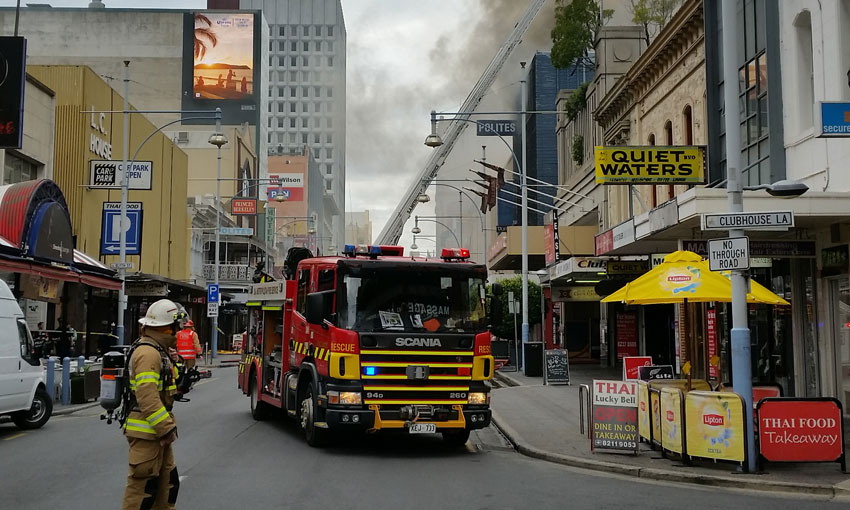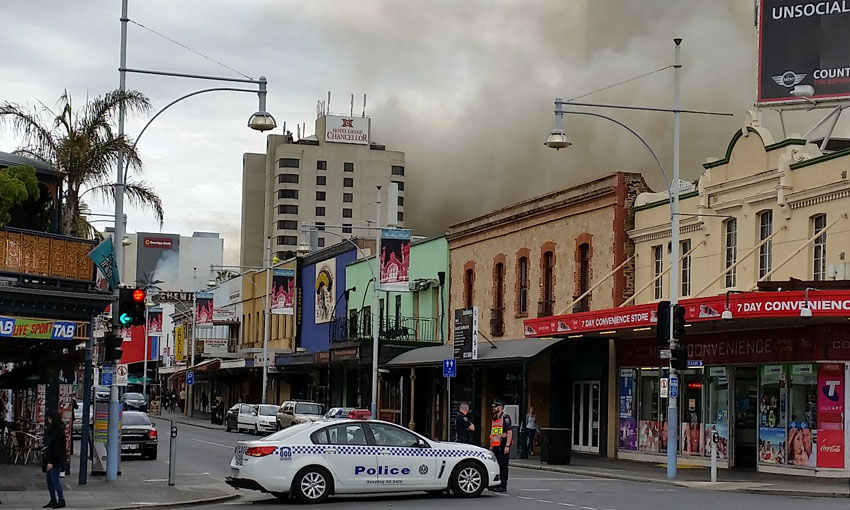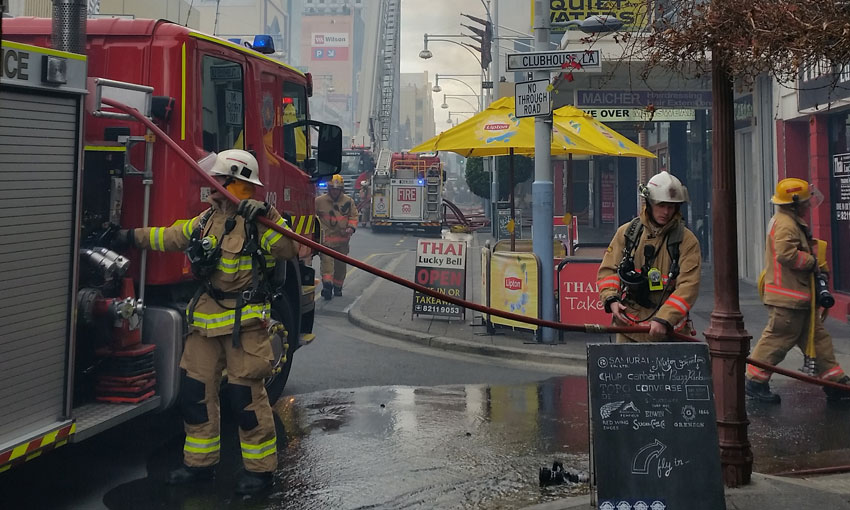When the building next to your office is ablaze and an acrid smoke cloud is billowing over the city as a result, a few truths come into focus.
As the smoke clears: Lessons from the Hindley fire
On Tuesday, when parts of Hindley Street were on fire and our office was filling with smoke, we took the sensible decision to clear out and head to the pub.
While the fire burned and we slowly moved away from the acrid air, a few things crystallised in my mind.
The first thing that became clear was who in my life reads the news. Those who do are the ones texting and calling.
I got plenty of messages checking on my welfare, but I think my favourite was the one from a former intern who I hadn’t seen for almost a year (but yes, I guess journalism interns do stay up-to-date). I’m still yet to hear from my Mum, who does love me, but seems to have a pathological resistance to media – even appearing capable of shutting down her hearing when a bulletin comes on the radio (no, the irony of my job choice is not lost on me… or her).
You also get to know that neighbourliness is still a thing. Apart from checking on one another on the day of the actual fire, West End business owners were pitching in to help each other the day after. Yesterday, Josh Baker of Coffee Branch/Clever Little Tailor/Pink Moon Saloon could be found in the basement of neighbouring small bar Udaberri helping owner Rowan Edwards bucket out the water from firefighting efforts that had flooded his basement.
But, there was one thing that became less clear for me as the fire spread through the sprawling old building on Hindley Street.
I’ve long been vehement in my position that the city’s heritage and historic spaces should be brought back to life, something which might require some loosening of our vice-like attachment to red tape and regulation.
The dead spots created by the daunting and dilapidated edifices, with their broken windows and boarded-up doors marring their beauty, do the CBD no favours. When they’re brought back to life, even temporarily, these buildings change from a symbol of what’s going wrong with the city into something romantic that offers Adelaide a sense of identity – a rootedness – that we sometimes lack.
In my enthusiasm for converting dead buildings into living ones, I have largely glossed over why all that red tape and regulation exists. As a fire gained pace in an old building on Hindley Street this week – endangering the lives not just of the people in that structure but also those nearby – regulation suddenly seemed like more than just an obstacle to activation.
The building code is very boring (like REALLY boring – I read the whole thing in a former job), but it has some pretty pertinent things to say about maintenance measures that could save lives when everything is on fire.
And while things like the Form 3 Certification required by Council annually (for certain types of structures only) to prove buildings are up to code might seem onerous, and certainly prevent some building owners from re-tenanting their spaces, they’re also pretty necessary.
Prolific and engaged land owners like the East End’s Maras Group have no problem with the requirements, but they can see why others might.
“I think it’s incumbent on all property owners to have a strong level of pride in their buildings,” says Steve Maras.
“But it’s very difficult for a landlord who is not in the business of property – just a passive investor for example. If you’re in the business you should know what needs to be done and what to do to meet those requirements. But, if you’re not in the business it is difficult. And if you’ve left the building unattended or unchecked for a long time it gets even harder.”
Clearly though, the way to prod passive building owners into participating in the city’s invigoration is not by giving them a license to forego building safety requirements. I’m still pretty certain that there are some checks and balances that are more ego than essential, but you’d have to be pretty expert to work out what could go and what must stay and even then the regulatory burden would hardly be light.
What we need, then, is something that can enable building activation by sharing the regulatory burden with building owners. And, of course, we already have that in Renew Adelaide.
As much as Renew Adelaide’s public personality is all about helping “creative businesses” find city spaces, their back-of-house business is equally engaged in helping building owners meet standards so their spaces can be used.
“This is why Renew Adelaide does what it does,” says Steve, who is also the Chair of the organisation’s board.
“We as a group open up opportunities to allow vacant buildings to be re-occupied. We look after those compliance issues and help bring that property back to some kind of useful life.”
They are the only organisation in Adelaide that has the expertise and facility to manage this process, but this aspect of Renew is largely ignored. A fire is a weird reminder of the good work done in Adelaide and the support that should be given to those who do it, but as the flames crackled and the smoke rose, that’s what I was thinking about.






